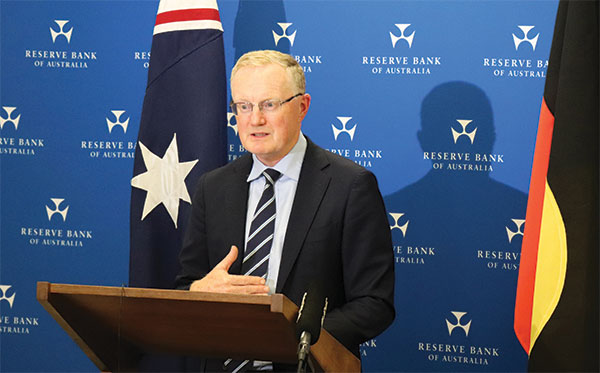Reserve Bank of Australia Annual Report – 2022Governor’s Foreword

The past year has seen the return of high inflation as a major policy concern globally. This follows pandemic-related supply-side disruptions, Russia’s invasion of Ukraine and significant monetary and fiscal policy stimulus during the pandemic. The Reserve Bank Board is committed to making sure that the current period of higher inflation in Australia is only temporary and that inflation returns to the 2 to 3 per cent target over time.
The past year has also seen a welcome decline in unemployment, with the unemployment rate the lowest it has been in nearly 50 years. This is a significant achievement and is one of the legacies of the policy support provided during the pandemic. Labour force participation has also risen and a higher share of Australians have a job today than ever before. The societal and economic benefits of this should not be understated in supporting the economic welfare of Australians.
The combination of higher inflation, a strong labour market and the underlying resilience of the economy has meant the Board has increased interest rates earlier, and more quickly, than previously expected. The monetary policy support implemented over the past couple of years has helped insulate the economy from the worst effects of the pandemic, but the challenge facing monetary policy has now changed. The task ahead is to return inflation to target while keeping the economy on an even keel. It is possible to do this, but the path is a narrow one and clouded in uncertainty, not least because of developments elsewhere in the world.
The rise in bond yields that has accompanied the stronger economy and higher inflation has resulted in significant valuation losses on the Bank’s holdings of government bonds. As a result, the Bank has recorded an accounting loss of $36.7 billion this year, which has reduced its equity to negative $12.4 billion. This negative equity position does not affect the Bank’s operations or its ability to operate effectively or perform its policy functions.
The Board expects that the Bank’s capital will be restored over time due to positive underlying earnings and capital gains when bonds mature. Accordingly, it has not sought a capital injection from the government. Instead, the Board’s strong expectation is that future distributable earnings will be retained by the Bank to restore its capital, rather than paid as dividends to the government. The Treasurer has indicated his support for this approach, noting the situation will be reviewed each year.
The Government has announced an independent review of Australia’s monetary policy arrangements and the Reserve Bank. The Board and the Bank’s staff welcome this opportunity to take stock and make sure that Australia’s monetary policy arrangements are fit for purpose for the challenges ahead. We look forward to listening and learning from the perspective of others. We are also undertaking internal reviews of our policy measures during the pandemic, including the yield target, the bond purchase program and forward guidance.
The Reserve Bank is the banker to the Australian Government and during the year processed the government’s pandemic assistance payments and the disaster recovery payments following the east coast floods. It did this using Australia’s real-time fast payment system, which allows money to be paid into bank accounts 24 hours a day, seven days a week. Bank staff have also been working closely with Services Australia to help deliver new and innovative payment solutions.
More broadly, the payments landscape is changing rapidly with new technologies and business models. In its capacity as supervisor and regulator of the payments system, the Bank is devoting considerable resources to ensuring that safety and efficiency continue to underpin the evolving payments landscape. The Bank is engaged in global efforts to lower the cost, and improve the efficiency, of cross-border payments. We are also examining, in conjunction with industry partners and other central banks, the case for a central bank digital currency.
The Reserve Bank staff have continued to work tirelessly in the public interest over the past year, while dealing with the interruptions caused by the pandemic. As an organisation, we are devoting significant resources to cybersecurity and technology stability to ensure our IT systems remain secure and resilient. We are also investing in data management so that we can better harness the power of data. We remain committed to being open and transparent and to explaining our decisions. We are also continuing to broaden our engagement with the community and to invest in public education resources for students and teachers of economics.
The Reserve Bank is staffed by people who have a strong commitment to serving the public interest. They do their jobs with calm professionalism and to a very high standard. The past year has been another challenging one, but the staff have been more than up to the task. Once again, the Board joins me in thanking the Bank’s staff for their dedication and for their contribution to the welfare of the Australian people.

Philip Lowe
Governor
7 September 2022